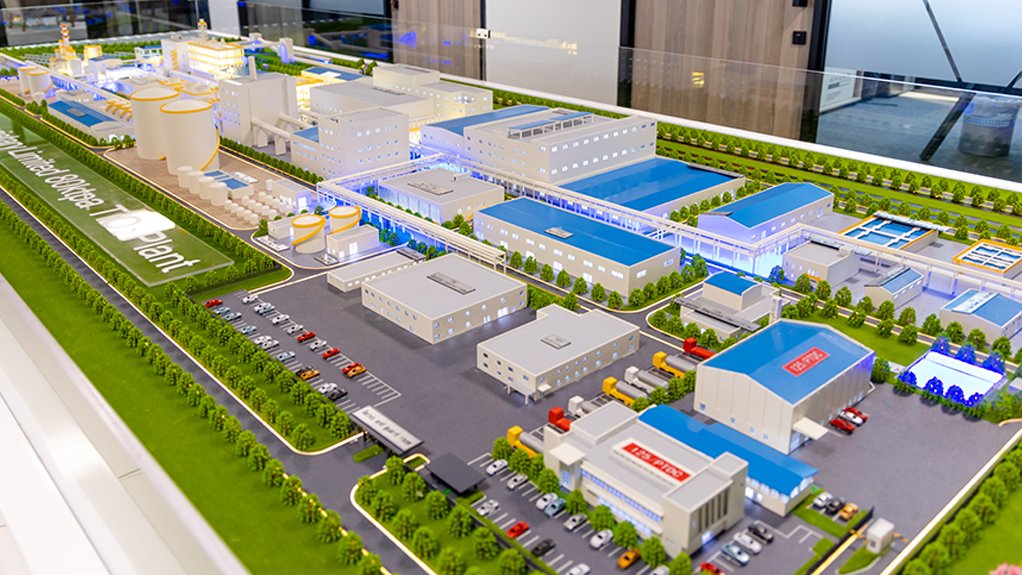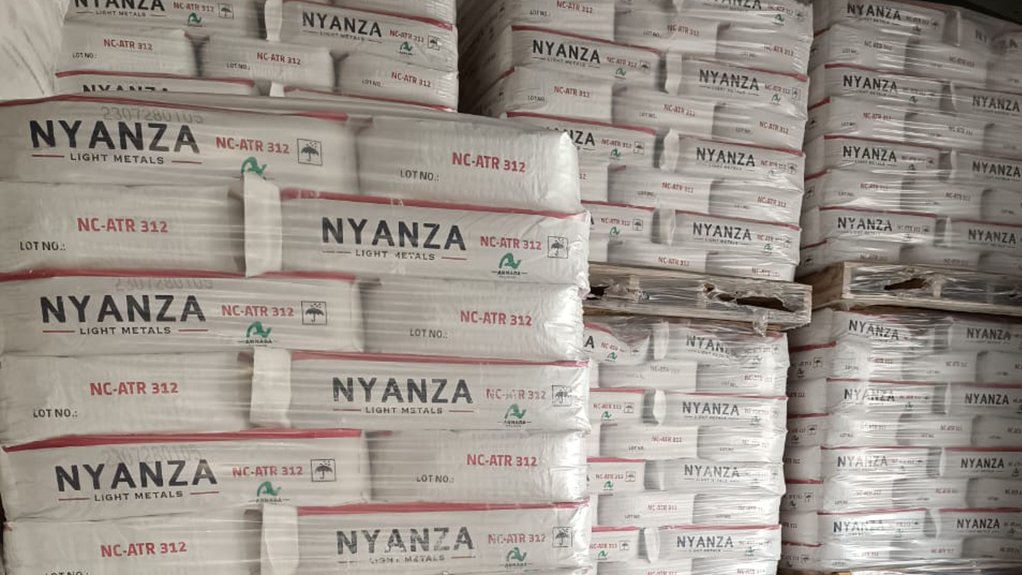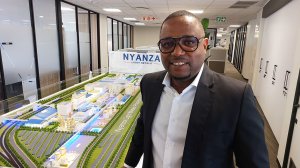JOHANNESBURG (miningweekly.com) – The bulk earthworks phase of the Nyanza Light Metals plant to advance ilmenite up the value curve as titanium dioxide (TiO2) pigment has begun at the Richards Bay Industrial Development Zone (RBIDZ) in South Africa’s KwaZulu-Natal province.
Nyanza will process ilmenite produced from the mining of heavy mineral sands, which are abundant in Africa, to produce the ten-times-higher-priced TiO2 pigment for industrial coatings, architectural paints, paper and plastics.
Site clearing, levelling and geotechnical studies have begun and piling plus other bulk earthworks are expected to continue into 2025.
Plant erection is scheduled to commence later in 2025, with first production from 2027.
“We had to do a mini equity close, where we had to find sources of funding to start with the bulk earthworks, primarily looking at site levelling, clearing, doing the detailed geotech work,” Nyanza Light Metals CEO Donovan Chimhandamba told Engineering News & Mining Weekly on Tuesday at the company's offices in Sandton. (Also watch attached Creamer Media video.)
Interestingly, Nyanza has signed an engineering, procurement, construction (EPC) and operations management contract with East China Engineering Science and Technology Company, a subsidiary of China National Chemical Engineering Group Company.
“What we started in August should run until the second quarter of next year, when the site will be deemed ready for the EPC contractor to build the plant,” said Chimhandamba, who reports working well with the RBIDZ and the Department of Trade, Industry and Competition in developing the project, which will require capital expenditure (capex) of $550-million and peak funding of $860-million.
On the site area of 69 ha, 28 ha will be covered by the TiO2 plant and utilities, and other parts are being earmarked for lithium iron phosphate, zirconium oxychloride, fumed silica, iron sulphate and sulphuric acid.
Eighty-five per cent of the 80 000 t of TiO2 a year will be exported to Africa, Europe, and North and South America.
Already built is a product testing and development centre that is providing samples for customer testing.
Three thousand jobs are expected to be created during construction and 850 permanent jobs during operation.
Engineering News & Mining Weekly: Let's talk about finance. How did you get the finance and is it going to be sufficient to take you through to the final product?
Chimhandamba: The nature of the project that we're building requires long-term financing. The bulk of our lending is from development finance institutions (DFIs), both locally and from the continent, and that gives us 12-year tenor. Because of the tenor, the financing costs become quite steep. The project capex alone is about $550-million but the construction period runs over 42 months, 36 months to mechanical completion, and another six months for commissioning and ramp-up mode. Private equity is not capable of taking on such long periods of no cash flows, the local commercial banks struggle beyond seven years tenor, so we had to do some fancy structuring to be able to bring in the multilaterals, and we've got some significant good players. Maybe now is not the appropriate time to mention them, but most people in the project are very well aware of all the DFIs. If you look at the peak funding with the financing costs, with working capital, it peaks close to $900-million – $860-million to $900-million – which is quite a significant price tag. It is expensive for the capacity because of the additional large plants that we have had to build ourselves. If we were building this plant in the US, Europe or China, for example, their industrial development zones come fully equipped with the utilities and infrastructure. But in our case, we have to build a demineralisation plant because there's not enough potable water within Richards Bay. We have to bring in clarified water and then demineralise it. That's a huge plant in itself. We also have to build our own sulfuric acid plant, which is also a huge plant in itself, at 1 000 t/d capacity. We had to also bring in four steam boilers. Because of our ESG philosophy, we deliberately moved away from anything with coal, so we find that we are firing our steam boilers with gas. So liquefied petroleum gas to start with; hopefully the actions that are happening around liquefied natural gas (LNG) will materialise in time for us to switch to LNG and even reduce our carbon footprint. So when you take those utilities, the rail and all of these things over and above the actual titanium dioxide plant, we have got almost $300-million in the ticket just to deal with utilities. So things that would have normally been operational expenses, where we buy across the fence, are things now that we had to bring in as capex to avoid the risk of these things not being built on time, so we've put all of this under one package.
Where will you get your ilmenite?
We use what we call sulphate ilmenite. Ilmenites are not monolithic. You've got different types, depending on the amount of TiO2. What's also critical is the chrome content in some of these ilmenites. The KZN coast’s ilmenites have slightly higher chrome percentage, making them not lucrative for our kind of process, because then the chrome has to be taken out. But if you start going north, you get Kenmare Resources in Mozambique, where there's also a new Chinese-owned mine. You also have Base Titanium in Kenya, although that resource is depleting, and in Egypt is Egyptian Black Sand Company. Then locally, we have a couple of mines that are operating, albeit on a small scale, producing what we call the sulphate ilmenite concentrate, not from beach sands, but from titanium ferrous magnetite inland. They run their own processes to produce a concentrate which is of high-quality titanium. So, you've got two types of pigments, one that's made using the sulphate process, using sulphuric acid, and one that's made using the chloride process, using chlorinate. The chloride pigment is more suited to automotive paints, whereas the sulphate pigment is more suited to decorative paints, architectural paints, plastics, et cetera. Currently, sulphate pigment is probably 55% of the global market, and 45% to 47% is the chloride pigment. We are even exploring some Highveld Steel slag, which we have used in the past, but because it's new technology, we might phase it in only at a later stage by bleeding it in. But we've run those trials. We've produced some pigment using it at a smaller scale, and we have many options.
OWNERSHIP
The project owners are Arkein Industrial Holdings and DBF Capital Partners. Co-developers include African Export-Import Bank, Africa Finance Corporation, and the State-owned Industrial Development Corporation of South Africa.
EMAIL THIS ARTICLE SAVE THIS ARTICLE ARTICLE ENQUIRY
To subscribe email subscriptions@creamermedia.co.za or click here
To advertise email advertising@creamermedia.co.za or click here
















